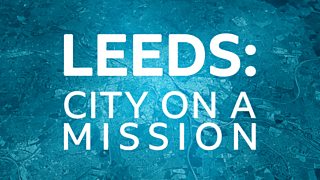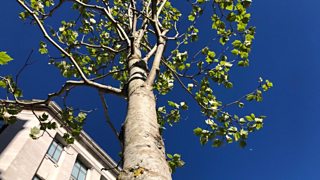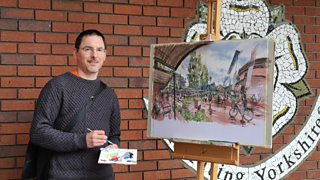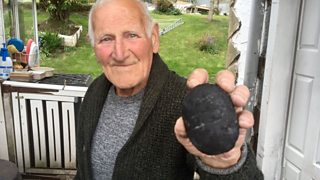How to make a lower carbon fry-up
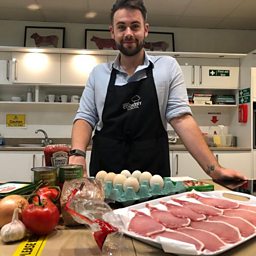
Experts say eating a full English creates roughly the same carbon emissions as driving seven kilometres in an average petrol car.
So, is it possible to reduce this environmental impact while still enjoying a traditional cooked breakfast?
成人快手 Radio 5 Live challenged former Master Chef semi-finalist Anthony O’Shaughnessy to make a lower-carbon fry-up.
Climate expert Alice Garvey says if you enjoy a weekly cooked breakfast then swapping to this over the course of a year could save the same amount of carbon as a short flight to Brussels.
The UK government has pledged to reduce greenhouse gas emissions significantly by 2035. Scientists say this is needed to keep the rise in global temperatures close to 1.5C above pre-industrial levels’.
This could be achieved through measures like more electric cars, low-carbon heating, renewable electricity and, for many, cutting down on meat and dairy.
Eggs
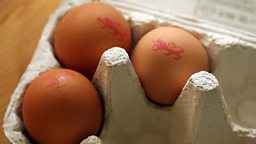
Eggs are a staple of any cooked breakfast and are one of the least carbon-producing items on the plate.
To make your breakfast more sustainable, Alice recommends buying meat and dairy from a local farmer.
“It’s good to buy UK-produced meat because generally our environmental standards are much better,” she said.
Bacon
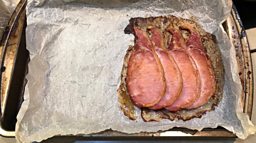
The Climate Change Committee, which advises the government on emissions targets, says people should be asked to eat 20% less meat by 2030. This will improve health and save money as well as emissions.
Having one slice less of bacon is an easy way to make a difference.
Anthony said: “Just have a bit less of it…little bits add up.”
Alice said also think about the type of meat you eat.
“Red meats like beef and lamb are much worse than pork or poultry so the good news is that a fry-up is probably better than a roast dinner,” she said.
Sausages

Choosing meat sausages in your breakfast will mean there’s a higher carbon impact. Just one can produce 1,290g of carbon – more than three times that of a vegetarian sausage.
Carbon emissions are one of the main greenhouse gases contributing to climate change.
Anthony, who runs a cookery school in Leeds, says as well as cutting down on meat, you can also save energy by thinking about how you are cooking it. If you already have the oven on, it might be more energy efficient to cook the meat in the oven instead of on the hob.
“It’s making use of the space in the oven while it’s on,” he said.
Drinks

It’s not just what’s on the plate which counts. Alice explained that morning drinks can be surprisingly costly to the planet.
A glass of orange juice ‘with bits’ is better for the environment than without because it takes less processing. Similarly, long-life juice has half the impact of fresh juice because it uses less energy to transport and refrigerate.
With tea and coffee, it’s the milk you put in it which ups the carbon footprint.
Alice said: "When you add the milk, that has two thirds of the whole footprint of the drink. Something like a latte has six times the impact of a regular coffee."
Beans and tomatoes
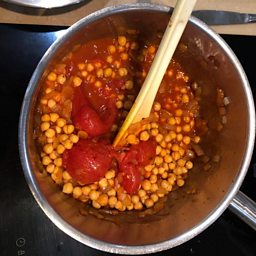
Just one serving of baked beans from a can costs 220g of carbon. Instead, Anthony recommends making your own with leftovers and beans grown more locally.
“Make a big batch and freeze it,” he said.
“We can use chick peas, butter beans and broad beans…it’s using beans which are close to the home.”
Similarly, switching to locally-sourced tomatoes can make a big difference to the carbon cost of the breakfast.
Bread

Switching from white bread to wholewheat bread can save around 22g of carbon.
Go one step further and swap butter for a plant-based spread or cut it out altogether.
“It’s like not having sugar in your tea. You get used to it,” said Anthony.
Statistics
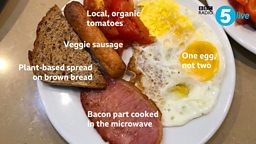
- The total impact for the conventional fry up is 3.7kg of CO2 (carbon dioxide).
- That's just more than 10 loads of washing, washed at 30 degrees and dried on the line (330g of CO2 each)
- Or more than a cheeseburger which comes in at 3.2g of CO2.
- Or just under half the impact of a new synthetic pair of shoes (8kg CO2 for fell running trainers made in China but brought to the UK by boat)
- Or roughly the same as driving seven miles in an average UK petrol car (530g CO2 per mile)
- Swapping to a lower carbon one can reduce the footprint by 37% - the same as a short-haul flight from London to Brussels.
How do we calculate the carbon cost of the breakfast?
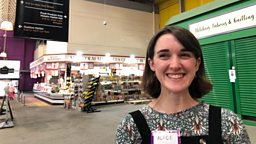
Alice Garvey says... To calculate the carbon footprint of food we can use a technique called lifecycle assessment which tracks the greenhouse gas emissions produced at each stage of the food supply chain.
An important consideration is portion size"
The lifecycle data mostly came from a great book by Mike Berners-Lee called which provides the carbon footprints of many foodstuffs, as well as from a calculator tool based on another academic study.
We estimated what the portion size of each ingredient would be in grams, and used the estimates of emissions per gram to calculate overall impact and the difference when using some of the low-carbon strategies.
Whilst the benefit of some of the meat-based switches seemed clear, an interesting finding was the contribution of the tomatoes to the overall footprint. By switching to seasonal, local tomatoes the footprint of the whole breakfast reduced by about a fifth.
Also, given it is the amount of every product that produces the impact, an important consideration is portion size!
成人快手 Radio 5 Live has launched a year-long project following the city of Leeds, which has committed to reduce direct emissions to net-zero by 2030.
Leeds: City On A Mission aims to show what a net-zero economy could really mean for people's homes, work, travel, diet and leisure time.
See more content from Leeds: City on a Mission
-
![]()
Leeds: City on a Mission
成人快手 Radio 5 Live follows the city of Leeds as it aims to become carbon neutral by 2030.
-
![]()
How hard is it to plant a tree in a city centre?
A conservationist explains the logistical challenges of planting a tree in the middle of a city centre.
-
![]()
Uniform exchange 'a massive financial help'
A look at how school uniform exchanges can save money and cut emissions.
-
![]()
Imagining our cities of tomorrow
Artist James McKay paints what Leeds could look like in 2030 if the council achieves its goal of becoming carbon neutral.
-
![]()
The coal miner giving up coal
Former miner Stan Renton and his wife Audrey explain why they are giving up their coal fire.
